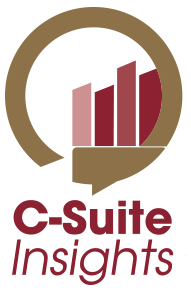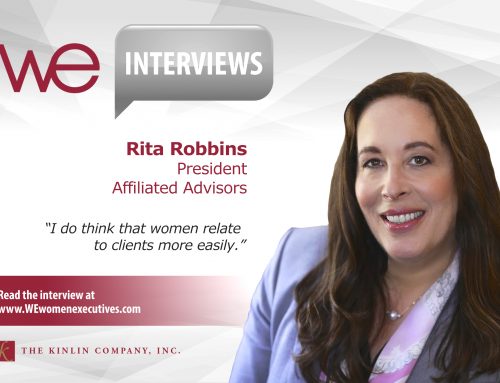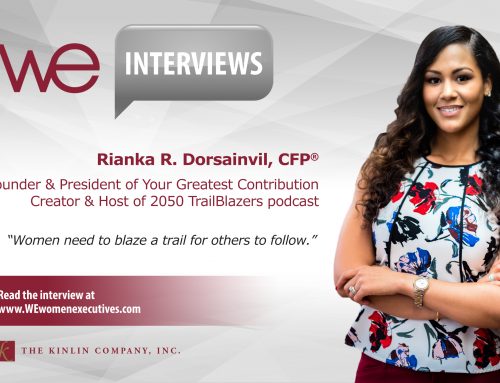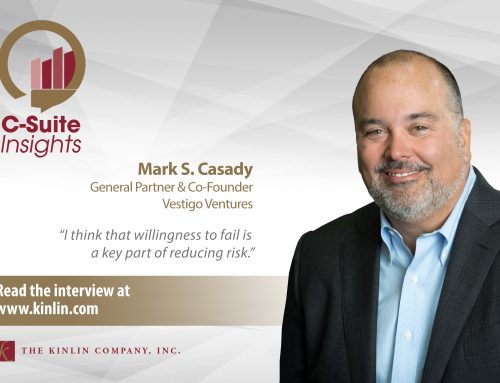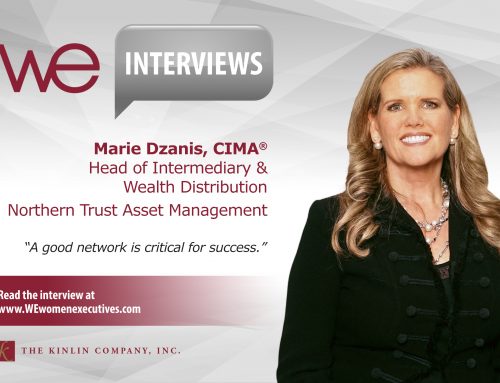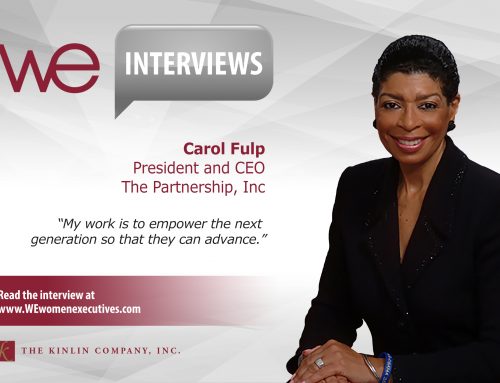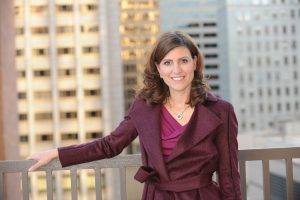 Kristi Mitchem
Kristi Mitchem
Chief Executive Officer
Wells Fargo Asset Management
Kristi Mitchem is Chief Executive Officer and Head of Wells Fargo Asset Management (WFAM), a division of Wells Fargo’s Wealth and Investment Management Group (WIM). Wells Fargo Asset Management has assets of more than US$480 billion and has 29 autonomous investment teams and more than 500 investment professionals with offices and clients around the world. As CEO, Kristi has overall responsibility for all aspects of WFAM, one of the largest asset managers in the United States. WFAM’s focus is to help both individuals and institutions reach their financial objectives through strong, consistent investment results. The firm is recognized for its top-tier investment talent and commitment to active management and is organized into specialized investment teams that are supported by a strong, multi-asset class solutions platform and independent risk management capabilities.
I recently sat down with Kristi to chat about a wide range of issues, from her journey to the corner office and the issues that occupy her mind to the importance of mentors and sponsors and the significance of knowing your own heart and mind.
Heart and drive are essential
I began our conversation by asking Kristi to tell me a bit about her background and the career steps that led her to the CEO’s seat.
“I attended Davidson College in North Carolina and majored in political science. After graduating, I went to Costa Rica as a Fulbright Fellow and from there to Wall Street. I was an analyst for several years, focusing on Latin American investment banking, in particular project finance transactions. I lived in New York City for a time and in Mexico City when I was working specifically on Latin American financings for infrastructure projects.
“When I completed my rotation as a Wall Street analyst, I decided to go back to business school at Stanford. While there, I interned at Goldman Sachs and then went on to work for the firm fulltime for the next nine years.
“I worked at Goldman Sachs in New York and in San Francisco. I moved from the investment banking side of the house to the sales and trading side, and I did a lot of different things for them. I started in Latin American fixed income and eventually transitioned into a role in equity derivatives. I also co-led their U.S. program trading effort as well as transition management.
“In 2005, I decided to leave Goldman and join one of my biggest clients at the time, Barclays Global Investors, which was here in San Francisco. A big driver for that decision was domicile; I wanted to be in San Francisco and work for a San Francisco-based company. I came to BGI to run their transition management business and did that for about a year and a half before being asked to do a startup for them in the defined contribution business, which we subsequently grew into a substantial business. At the time of the merger, that business was probably $300-350 billion – in other words a very substantial business for BGI and certainly a lot of fun to grow.
“When BlackRock decided to take over BGI, I decided to leave shortly after the transaction closed and join State Street Global Advisors to help them grow their DC business. After a couple years in the DC group, I was asked to co-lead Institutional and then, ultimately, to take on all of Distribution and Institutional coverage with responsibility for our cash management businesses, our DC businesses, all of our Americas-based distribution and our charitable asset management business. I did that for a couple years and then was asked by Wells Fargo to join them as CEO of Wells Fargo Asset Management.”
Kristi’s career has clearly been on a solid, upward trajectory from the outset. Why do you think you’ve realized such success, I asked.
“I was always very clear about my strengths and my passion. Also, from the very moment that I entered the financial industry, I was client-driven. I loved markets, I loved the complexity of different instruments, and I loved investing, but what really got me excited was doing all that on behalf of a client who needed our help and assistance. Solving problems for clients energized me; I was passionate about it and finding something that you’re truly passionate about is the single most important ingredient to ensuring future success.
“Another thing…I just wasn’t willing to give up. My mom told me that when I was a child, my favorite book was The Little Engine That Could about the engine that just keeps trying to go up this steep hill and compete against all these locomotives. The story wasn’t about how beautiful the engine was or its intrinsic characteristics. It was about heart and drive, and that’s true for me as well.”
Vision and mission are critical
Feeling as though I had a good sense of the passion that drives Kristi, I was equally curious to know what concerned her. What issues are front and center for you at the moment, I inquired.
“The main things I’m focused on, at this juncture, are the culture, vision and mission for this organization. Understanding what you’re passionate about and driving towards that is what creates success, and that’s not just true for individuals, it’s also true for firms. We spent a lot of time last year developing our mission and vision for who we wanted to be and the behaviors that we wanted to demonstrate in order to get there. Now, I spend a lot of my time acting as a personal ambassador for that vision and mission. I think people need a higher calling. I think you have to connect to something bigger than yourself, something that truly motivates you, to be excellent. A lot of my time is spent creating that vision and motivation inside our organization.
“I’ve also spent a lot of time getting the organizational structure right, because you need a structure that supports dynamic change and we needed to remake our organization to get that system in place.
“Finally, you have to get the strategy right. If your organization is structured appropriately – with people in the right roles, with the right responsibilities and clarity around decision making – then the third part of the equation is, ‘What do I feed into the system strategically to make all of this work as a cohesive whole?’ That means deciding which strategies you’re going to invest in, which investment capabilities you’re going to bring on, which technologies you’re going to utilize to better target clients or to create more sustainable alphas, etc. That’s where I spend a lot of time.”
And what are you worried about these days, I asked.
“I worry a lot about shift and changes in market dynamics. I think about active versus passive and what the massive rotation into passive could produce in terms of unexpected consequences in the future. I think a lot about liquidity and liquidity management. Obviously, the amount of inventories that we see held on the street has shrunk dramatically since the passage of Dodd-Frank and Volcker, so I think about how that might impact our ability to continually generate alpha for clients on a sustainable basis.
“And then, of course, I’m always thinking about our people. There are things within the industry that could go wrong and then there are things endemic to you and your organization, so it’s essential to be accessible to your people who are on the front lines. As a result, I spend a lot of time going around and talking to our people. I travel constantly to different offices to get a sense for how people are doing, as well as understand the challenges they face and the resources that they need to truly be successful.”
Can you talk a bit more about the culture you’ve created within the asset management side of Wells Fargo’s business, I pressed.
“Our rallying cry inside this organization is to put the happily back in ever after. We think that investors, both institutional and retail, have lost their faith, confidence and trust in the asset management industry and we want to be the ones that bring it back by exhibiting several important behaviors.
“The first behavior is ‘Kiss the frog.’ We want an organization where we’re not afraid to take risks in support of good progress, so it’s important to allow people to try things that don’t work – that’s a critically important part of evolution.
“The second behavior is ‘Slay the dragon.’ This involves recognizing internal and external barriers to your success and then calling them out and taking them on rather than working around them; you must fix the process or belief system that’s preventing you from reaching your objectives.
“The third behavior, and my personal favorite, is ‘Blow the house down and build a better one.’ This behavior revolves around the notion that we’re in this fantastic position given our size within the industry – we’re not too large to be an innovator. This concept is about forcing our organization to build the strongest investment products and strategies in the marketplace today.”
Connection is crucial
I felt as though I had a good sense of Kristi’s passions and concerns, so I decided to shift the focus to another subject that continues to provoke discussion: mentoring and sponsoring. Did you have a mentor or sponsor as you climbed the career ladder, I asked, and are you currently mentoring or sponsoring anyone now?
“I’ve always had mentors and sponsors, but I think you have to define those roles very broadly. I would say that, for much of my career, my best sponsors were my clients. For example, early on in my career, I had a client at Goldman who was fantastic. He was both client and mentor. He put me through my paces every day. He taught me a lot about what excellent coverage meant and I worked extremely hard at getting very good for him – I knew what he expected and I knew that I could get there. Once I got to a place where I was constantly meeting, if not exceeding, his expectations, he could not have been a louder, prouder sponsor for me. He was a huge account. Senior people visited him all the time, and his first question was always, ‘What’s next for Kristi Mitchem?’
“The whole relationship evolved naturally — I think the best sponsorships do. You can create mentorship by assigning someone a mentor, but in my personal view, you can’t create sponsors. You can bring people together and hope that a sponsor relationship evolves from that interaction, but to be effective, the sponsor has to believe in you and own your success personally.
“I can’t say it was easy. But if you met his expectations, you were rewarded…with flow, with business, and with a lot of sponsorship.”
And what about your mentoring of others, I asked. Does Wells Fargo have a formal mentoring program?
“We do, and I have two formal mentees inside the Wealth and Investment Management division. But I think you also have informal mentees all the time and that’s really the power of it. Connecting with people inside your organization, teaching them, helping them to grow, and helping them understand what excellence really requires – that’s what good leaders do.”
Awareness is key
Kristi’s comments about her mentor brought to mind another issue of debate within asset management: gender balance. What do you think we should be doing to achieve greater gender equity in the financial sector, I inquired.
“This is an area of strong focus for me. We took a strong step with respect to gender diversity when I was at State Street with the launch of SHE, an ETF that focused on companies where women had a greater percentage of senior leadership roles. I believe that, in terms of capital, it’s important to vote with our feet. There’s a tremendous amount of evidence indicating that more diverse leadership teams and workforces create better results, and investing behind that business case is what will truly give it teeth. I think that’s probably the most important thing we can do industry-wide.
“It’s also important to know the science. To counteract bias and behavioral impediments to diversity, you have to know what they are and be willing to call them out when you see them. I think leaders are well positioned to do that, but they can’t do it effectively if they don’t recognize the behaviors.
“I’ll give you a quick example. When a woman presents to a senior group on a traditionally perceived non-female-type task, she is subjected to approximately five times more questions than a man typically is. I believe this communicates a not-so-subtle lack of confidence in the person’s ability to do the job, and I believe it’s driven by gender. As a leader, if you know the science and are aware that this happens, you can come up with a way to counteract the behavior in a meeting, which is really important.
“The last thing I would say is that matching is incredibly important. If we don’t see people who look like us in the senior ranks of an organization, we’re unlikely to believe that we can get there. This tells me two things: we must focus on diversity, at junior and senior levels, and we must think about who’s visible within the organization and accentuate diversity, whether in gender or another diversity category.”
Insight is important
With our time together growing short, I was eager to pose my favorite closing question: what advice would you give to women trying to make their way up the corporate ladder, I queried.
- Get a communications coach. Make sure that you can speak cogently, eloquently and convincingly about the things you really care about and about the businesses that you manage and run. You can always improve your communication skills. You can have fantastic ideas, but if you can’t communicate them, then they don’t really impact the business that you run and they don’t impact your personal career trajectory.
- Realize there’s no substitute for hard work. Be relentless about doing whatever it takes to put your best foot forward with your most important opportunities.
- Always take an open book test. If you’re asked a difficult question, you have two alternatives. You can think about it and quickly put out your best answer, or you can say, ‘Wow that was a really good question. Let me think about that and get back to you.’ In most cases, the latter response works just fine and gives you time to show your thought process and do the research that you need to do to come up with a really strong answer.
- Remember career is not the only thing. CEO is not the only title that I have; I’m also a mom and a wife. It’s possible to have both.
